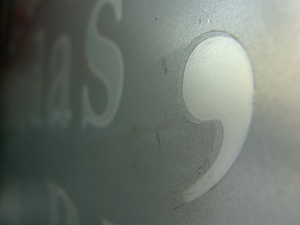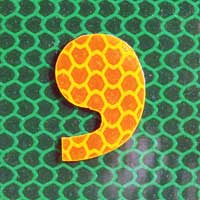Commas indicate a break or pause within sentences and help to clarify meaning. The best way to proofread for commas is to read aloud. When you use prosody, reading like you speak, you’ll hear natural pauses; those are the points that often require commas. As Patricia O’Conner says in her book Words Fail Me, “The point of punctuation is to make writing clearer and easier to read.” Commas are a useful tool for doing so.
A writer uses commas to separate a direct address from the rest of the sentence. Too many commas can also result in confusion, as in the joke below, which became the title of a book on punctuation by Lynne Truss—Eats, Shoots & Leaves.

Source: Giant panda at Vienna Zoo, RobertG, Wikipedia
A panda walks into the library. He eats a sandwich, then draws his bow and shoots two arrows.
“Why did you do that?" the librarian asks as the panda walks toward the exit.
The panda shows her a badly punctuated book. “I’m a panda,” he says. “That’s what it says we do.”
The librarian looks at the page:
“PANDA.
Large black-and-white
bear-like mammal, native to China.
Eats, shoots and leaves.”

Source: At this point,we better begin to use commas, xavib, Flickr
When you edit for commas, your attention is on individual sentences. One technique that may help you develop a laser-like focus on internal punctuation is to read the last sentence of your paper first and then continue backward sentence-by-sentence to the beginning. Keep an eye out for your own frequent comma errors or for the common mistakes that follow:
- Did you add commas after the city and state?
Most writers know to include the comma between the city and state but often overlook the comma after the state name.
Visit Happy, Texas, for an ecstatic experience.
- Did you add a comma after the complete date?
A complete date (consisting of a month, date, and year) requires a comma after the day and the year. Most writers remember the comma after the date but forget the comma after the year.
We are making a plan for National Punctuation Day on September 24, 2013, that includes writing to the Huffington Post about this spelling error on their website, “Top 5 Punction Errors.”
- Did you delete the comma between the month and year?
If you’re writing just a month and year (without a date), don’t separate them with a comma or include a comma after the year.
September 2013 is right around the corner. How will you celebrate on the 24th?
- Did you include the last comma in a series?
Another comma that gets overlooked is the serial comma (also known as the Oxford comma). Use it immediately before a coordinating conjunction after the final item in a list of three or more items. In many sentences, this last comma helps prevent ambiguity, so it’s winning out as the preferred way to punctuate a list or series.
The Texas bachelorette couldn’t decide whether she liked the oilman, the wrangler, the financial analyst or the stock broker.
How many bachelors are in contention? Without a comma after financial analyst, there are only three. With a comma immediately before the conjunction or, there are four.
The Texas bachelorette couldn’t decide whether she liked the oilman, the wrangler, the financial analyst, or the stock broker.
- Did you use a comma to separate an introductory phrase from the rest of the sentence?
In the book Eats, Shoots & Leaves, Lynne Truss uses humor to remind readers about the importance of punctuation.
- Did you use a comma to separate two independent clauses in compound sentences?

Source: comma, Leo Reynolds, Flickr
If a sentence contains two independent clauses linked by a conjunction (and, as, but, for, nor, so, or yet), usually there is a comma before the conjunction. (See Use a Variety of Correctly Structured Sentences—Compound, Complex, Compound–Complex in the Related Resources for more information on sentence structure.)
Use commas before the conjunctions in compound sentences, and use commas to separate introductory phrases from the rest of the sentence.
Comma Commentary: Before you move on to the next section, review the rules about commas in this section again. Keep them in mind as you edit your writing.